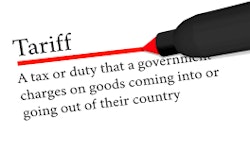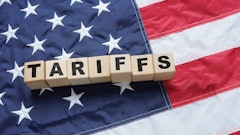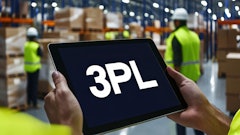
“Blockchain is the Next Big Thing.” “Companies Need to Start Taking Advantage of Blockchain.” “Blockchain is Set to Revolutionize Your Industry.”
Almost every day, there is a new headline proclaiming blockchain technology as the next major disruptive force. From healthcare and finance to government and—of course—food and beverage, its hype is building in numerous industry conversations. However, like most new, hyped-up technologies, there can be confusion or misconceptions in the marketplace. Thus, even though company leaders, including those at major food and beverage companies, recognize blockchain can be a beneficial investment, they can be hesitant to adopt and deploy it across their organizations.
Blockchain was originally developed in 2009 by Bitcoin inventor and cryptocurrency pioneer, Satoshi Nakamoto. Nakamoto came up with the concept of blockchain as a public, digital ledger to track the exchange of Bitcoins among those in its network. These transactions are saved in cryptographic blocks—hence where the technology gets its name. No one can alter any record of a transaction without changing all of the subsequent blocks. Any alteration requires consensus from the rest of the network. As a result, blockchain generates greater transparency and trust among all parties connected within the network.
Log in to view the full article
“Blockchain is the Next Big Thing.” “Companies Need to Start Taking Advantage of Blockchain.” “Blockchain is Set to Revolutionize Your Industry.”
Almost every day, there is a new headline proclaiming blockchain technology as the next major disruptive force. From healthcare and finance to government and—of course—food and beverage, its hype is building in numerous industry conversations. However, like most new, hyped-up technologies, there can be confusion or misconceptions in the marketplace. Thus, even though company leaders, including those at major food and beverage companies, recognize blockchain can be a beneficial investment, they can be hesitant to adopt and deploy it across their organizations.
Challenges to Solve
Blockchain was originally developed in 2009 by Bitcoin inventor and cryptocurrency pioneer, Satoshi Nakamoto. Nakamoto came up with the concept of blockchain as a public, digital ledger to track the exchange of Bitcoins among those in its network. These transactions are saved in cryptographic blocks—hence where the technology gets its name. No one can alter any record of a transaction without changing all of the subsequent blocks. Any alteration requires consensus from the rest of the network. As a result, blockchain generates greater transparency and trust among all parties connected within the network.
Naturally, the financial and transactional history of the technology has led to its growing adoption in the banking industry. However, its secure and transparent nature has peaked interest from industries that have long been plagued by challenges in data silos, disconnects among disparate individuals and organizations, and the numerous movements of commodities among them. For instance, the healthcare industry has struggled with the proper sharing and storage of medical data and records. With countless patients, doctors’ offices, hospitals and insurance providers located around globe, there is high potential for error, fraud and lost records, which has created distrust among patients and healthcare providers. Blockchain technology can help rebuild that trust by storing medical records in a secure network that can only be accessed by the connected patients and authorized healthcare providers.
Likewise, the food and beverage industry has been challenged by an extensive supply chain, stretching from raw material and ingredient suppliers, production and food preparation sites, warehouses and distribution centers, transportation, and all the way down to the retail level—and back. With so many disparate links in the supply chain—often each one using its own systems to manage the processing and movement of goods—it makes it difficult to properly address many critical aspects of the food business. This includes meeting consumer demand, abiding by the FDA’s food compliance and handling regulations, mitigating food recalls, and managing the replenishment and shelf life of products.
Preventable Loss
Blockchain can provide food and beverage manufacturers a way to digitize every step that a product takes in the supply chain in a permanent, connected ledger. These records are centralized for all parties within the value chain, from a grain supplier to the grocery-store shelf. This can be critical in today’s marketplace, where more consumers are demanding greater knowledge of where their food comes from and want to ensure the integrity of the products they’re purchasing—especially in the booming $40-billion organic foods sector.
In 2017, The Washington Post reported that a shipment of 36 million pounds of conventional soybeans from Ukraine passed through Turkey before arriving in California. Along its way, the conventional soybeans had been relabeled as “organic” on all receipts, invoices and shipping records. The false organic label boosted their value by around $4 million before they were sold off to different organic food brands across the country for incorporation into their products. This meant that these brands not only paid an excessive amount for conventional ingredients, but also were mislabeling their final products, which could result in penalties and lawsuits.
Using blockchain to confirm these properties can help instill consumer confidence in a brand, especially among those that care about understanding the lifecycle of their food goods. For instance, beyond being organic, there are other considerations such as whether or not a product was produced locally, manufactured in a facility that processes nuts or dairy for those with allergies, and the like. If consumers learn that they were misled or suffered a medical concern due to a product label, it could damage brand reputation—leading to trust issues and lost revenue.
Because blockchain can connect every part of the supply chain with records of each transaction, it can also help with food safety by mitigating the impact of a food recall and protect suppliers, brands and most importantly the consumer. By implementing the technology, a manufacturer, brand, retailer or consumer could easily trace back the records and find the source of a problem. It might be a supplier issue, a plant-floor quality problem, or something wrong in packaging and labeling.
Corrective steps can then occur to prevent additional supply chain issues, such as following the records to the retail level and finding out which stores received the affected lots and shipments. As a result, the company can do a more targeted recall and only pull the faulty products from store shelves, rather than a sweeping, widespread recall that will inadvertently remove good products in the process. Companies can thereby mitigate the amount of waste due to product recall destruction and minimize lost profits.
Reactive to Proactive
Another major issue in today’s hyper-complex supply chain is demand forecasting and manufacturing planning. The data silos and disconnects, as mentioned above, among manufacturing, warehousing and retailers, force most companies to approach manufacturing planning and inventory management from a reactive model. Demand increases, so they raise production and output. Items run out of stock or expire, so they send more to fill store shelves, refrigerators and freezers.
Unfortunately, a reactive approach also means that these manufacturers are always behind the curve, resulting in supply and demand imbalances. Companies and their retail partners end up with excess inventory due to increased production on items that were in demand but no longer are, as demand is perishable just like the product. In the business of perishable goods, where items have a limited shelf life, companies could be dealing with a significant amount of waste not only in expired product, but also the manufacturing and transportation costs that go into it. Meanwhile, they may under-project demand and fail to deliver adequate replenishment on products, resulting in out-of-stock items for customers and, therefore, lost sales.
Instead, blockchain can provide food and beverage manufacturers visibility into the store level, enabling them to gauge demand downstream in order to properly plan production upstream in the supply chain. Because the data is connected and flows seamlessly in real time between every party, manufacturers can gain instant insight into what consumers are buying as well as what products are nearing the end of their shelf life. Thus, they can be more proactive with their manufacturing planning and replenishment, rather than simply reacting to inventory stockouts. Further, they can ensure that they always have the right types and amount of stock in their distribution centers, as well as guarantee the freshness of their products and maximize their shelf life at the retail level. No matter how much demand may fluctuate, they will always have goods available to satisfy consumers with limited excess, thereby eliminating lost sales, minimizing waste, and increasing revenue and profitability.
Blockchain technology is more than just hype. It is a practical consideration for any food and beverage manufacturer, brand and retailer dealing with the challenges of a fragmented, complex supply chain. Companies ready to tap into the blockchain and connect these disparate links will be able to streamline the exchange of information and data across their value chain and drive greater business outcomes. With complete transparency from source to shelf, they can generate greater consumer trust, ensure food safety and better meet market demand with the right product across all channels.

















![Pros To Know 2026 [color]](https://img.sdcexec.com/mindful/acbm/workspaces/default/uploads/2025/08/prostoknow-2026-color.mduFvhpgMk.png?ar=16%3A9&auto=format%2Ccompress&bg=fff&fill-color=fff&fit=fill&h=135&q=70&w=240)

